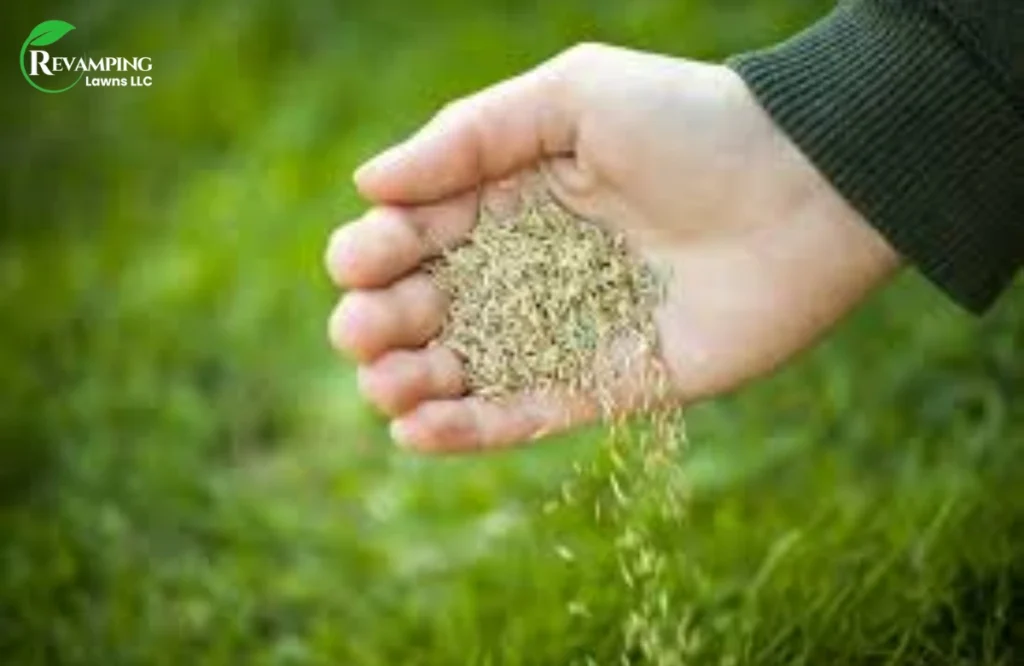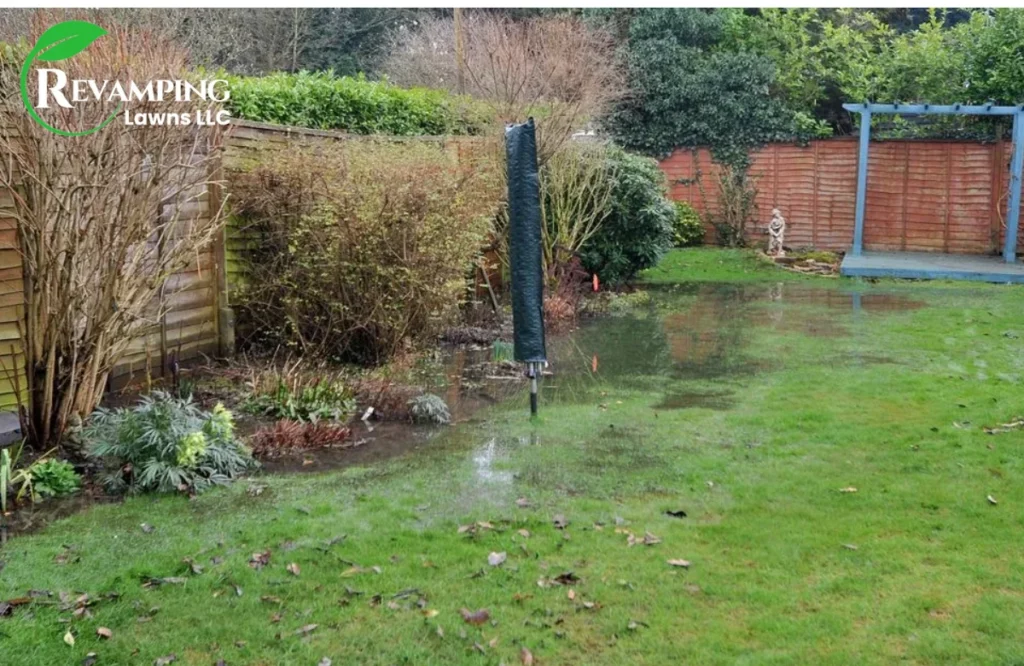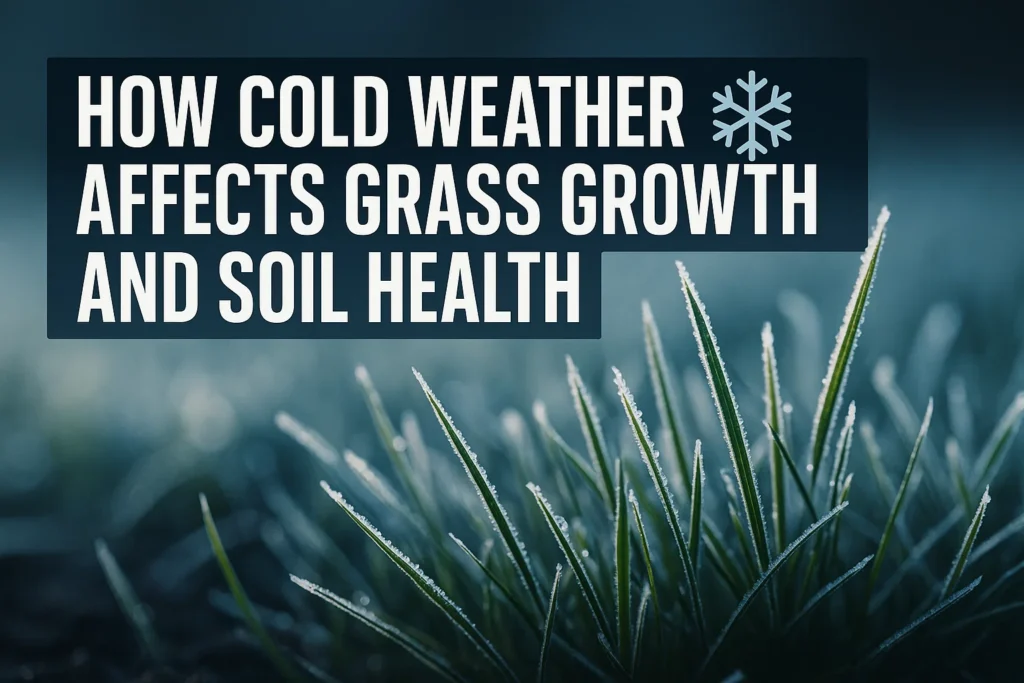Lawn care is a year-round commitment. However, cold weather presents distinct challenges in maintaining a healthy, vibrant yard. As the temperature falls and winter sets in, grass growth slows or stops. Soil undergoes significant changes in condition that can affect your lawn’s total health. Grasping how cold weather affects both grass and soil is essential to preparing the lawn for winter and ensuring it springs back fresh next year.
Why cold weather affects grass growth and soil health
Cold weather affects the survival and growth of grass, as well as soil health, because low temperatures prompt natural protective mechanisms in plants and alter soil conditions. Freezing soil as hard as a rock means that water and nutrients are limited to the roots of your grass.
Microbial and biological activity within soil also slows to a crawl, reducing nutrient turnover and helping conserve organic matter. When soil freezes and thaws again, or snowmelt produces excessive moisture in a compacted root zone already suffering from root diseases caused by waterlogging (too much water on roots), food can stop arriving at its destination.
In sum, cold weather throws grass into a state of dormancy to conserve energy while altering or stopping soil conditions that influence root nourishment. Proper lawn care just before winter and soon after can help your grass endure these seasonal pressures and come back more vigorous than ever in the spring.
Effects of Cold Weather on Grass Growth
The drop in temperatures also means fewer hours of daylight for grass, and most types will slow or stop growing. So, they enter a quiescent period called dormancy. This period of rest is necessary for the grass to hold onto the required water and nutrients during the harsh winter months. Understanding how cold weather causes grass growth to slow down can help homeowners protect their lawns and ensure healthy regrowth next spring.
Cold Weather Triggers Dormancy in Grass
Most grass types stop growing in the dormant state, which ensues. This period of resting allows the grass to hold on to vital water and nutrients throughout the harsh winter months. Understanding how cold weather affects grass dormancy, take the necessary steps to protect their lawns and ensure healthy regrowth in spring.
Dormancy is the natural protection mechanism that grass uses to shield itself from extremely cold weather. When the thermometer dips to between approximately 45 and 55 degrees Fahrenheit for a few days, grass growth slows or stops altogether. In this state, grass is conserving water and energy to fight winter stress instead of growing actively. Dormancy differs with grass types, as warm-season homeowners will typically have grass going dormant sooner than cool-season grass. However, cool-season grass may decrease growth but is still able to undergo some minor activity. It is what helps the grass to survive freezing without being destroyed.

Visual Signs: Grass Turns Brown but Remains Alive
Grass usually looks brown or yellow when it’s dormant, and that can be mistaken for a dead lawn. The color change is an act of preserving nutrients and protecting the underground roots. For all of its dormancy, the grass is not dead underground in winter. With the arrival of spring temperatures, the grass comes out of dormancy and readily greens up and begins to grow again.
Temperature Thresholds and Growth Reduction
Plant development is very temperature-dependent. The majority of grasses cease active growth once the air temperature drops below 50 to 55°F and soil temperature falls below approximately 40°F. While some cool-season species – mainly fescue and ryegrass varieties – could maintain limited shoot growth during mild winters, metabolic processes slow dramatically in general terms. This reduction in growth is necessary to save energy and water during stress periods.
Moisture Stress and Frost Damage Risks
Cold weather can bring moisture deficiency, known as desiccation. Soils that are frozen do not allow plants to draw water, and the result is that roots suffer. When there is moisture in the frozen soil itself, grass suffers damage from drying out during dormancy as if it were being baked. Frost harms the grass by freezing ice crystals inside cells–and so ruptures cell walls. People walking on frosted grass cause physical damage to it, increasing the pressure and delaying recovery until the temperature is again warm.
Preparing Lawns for Winter Resilience
Good lawn care before cold weather can help grass plants reduce the effects of winter damage. Essential steps include mowing the grass to about 2.5 to 3 inches, which helps prevent disease and protects roots from freezing. Fertilizing in late fall increases nutrient reserves, helping the grass through dormancy. By stepping over that foot traffic on frozen or snow-covered grass, you’ll also be protecting tender blades, while overseeding any bare spots readies the lawn for healthy growth in the spring.
with or without an enclosing system, protecting the succulent grass leaves from being bruised and damaged by the cells therein. It also helps cover bare spots from the summer, so that it can thicken up nicely before winter nodding off.
Effects Of Cold Weather On Soil Health
Cold temperature has a complex effect on soil quality and affects physical structure, moisture distribution, and biological function. Grasping these soil reactions to cold temperatures is key to proper winter soil care and long-term lawn and garden health.
Freezing and Soil Structure Changes
When soil freezes, its moisture turns to ice, which expands as it cools and disrupts the natural form of the soil. This expanding action may help to loosen compacted layers by breaking up the compacted layers, but can also result in disruption at the surface. If the ground is waterlogged or not covered, runoff and erosion may occur as the soil thaws. These freeze-thaw cycles are pivotal in transforming the soil texture and permeability affecting both water retention and drainage.
Slowed Microbial and Biological Activity
When seasons change and the weather gets colder (not on the same day every year, for sure), soil microbes and biology will slow down or go dormant. The microorganisms that break down organic matter are less active, slowing the rate at which nutrients are cycled and applied to plants. Slowed microbes may temporarily reduce soil fertility, but they also conserve organic matter in the soil during winter. This decrease in microbial decomposition is a resource conservation or protective mechanism to retain important nutrients for when better times return.
Moisture Saturation and Waterlogging Risks

In the winter, snow and other moisture are absorbed into the earth, its hydration preserved to feed growth in the spring. However, excess soil water resulting from melting snow or frequent precipitation can lead to waterlogging, particularly in poorly drained soils. Waterlogging in the root zone decreases oxygen, and this causes stress to plants, hindering root function. Moreover, when soil is saturated, it can become compressed, so pressing down on surface soils will restrict the supply of air and nutrients to plants, with negative implications for soil health.
Reduced Availability of Micronutrients
Cold soil temperatures and slower microbial activity can also lead to reduced availability of important micronutrients such as iron, zinc or manganese. The chemical reactions that take place in the soil slow and nutrient solubility drops, so if the minerals are present, plants still may not be able to uptake them. This micronutrient deficiency may be a limitation to plant health and growth during early spring months with elevated nutrient requirements. Soil supplementation and correct fertilization can compensate for these shortcomings.
Impact of Freeze-Thaw Cycles
Repeated freeze-thaw cycles repeatedly change the aggregate and structure of soil, which may ultimately cause soil instability. These really help cracks and crevices, which is good for aeration and water infiltration but can be harmful in terms of erosion and loss of fines. The roots of plants could be adversely impacted by the movement of the soil particles and varying moisture conditions. Repetitive freeze-thaw cycles dynamically change the soil texture and fertility, which affects the quality of the soil in general.
Tips to Minimize Winter Damage
| Tip | Description |
| Protect Lawn from Traffic | Avoid walking or driving on frozen or wet lawns to prevent damage to grass blades and soil. |
| Adjust Mowing Height | Leave grass 2.5 to 3 inches tall to protect crowns and reduce frost damage. |
| Apply Winter Fertilizer | Use potassium-rich fertilizer in late fall to strengthen roots and improve cold tolerance. |
| Clear Leaves and Debris | Regularly rake leaves and remove debris to improve air circulation and prevent mold growth. |
| Minimize Watering | Reduce watering; avoid overwatering frozen or saturated soil to protect roots. |
Additional Things to Avoid:
- Committed to mowing on frozen ground, during snow or when wet, which can rip and tear the grass blade.
- Heavy foot or vehicle traffic compacts the soil and harms dormant grass.
- During winter, avoid leaving heavy items or equipment on your lawn.
- Fertilizing after the soil has frozen.
- Ignoring moss or weed growth that can spread over winter.
Conclusion
During the winter, lawns are at risk of dying off, but they can be kept well and fully revived in spring with a little effort. Doing so helps to minimize damage during cold temperatures and preserves your lawn’s roots and blades, which is beneficial in achieving that beautiful, green look all winter long. Your lawn will remain strong and get a nice, new growth push when the warmer weather returns if you follow these few easy-to-do winter care tips for your lawn. When it comes to professional lawn care and winter prep, nobody does it better than Revamping Lawn.
FAQs
While dormant, grass turns brown to save energy, but remains alive below the surface.
It is best not to mow once frost or snow has set in, to avoid blade damage.
Water sparingly, only if there is no snow and rainfall is minimal, to avoid overwatering.
Apply a high-potassium winter fertilizer to help strengthen roots and promote better cold tolerance.
Yes, frozen grass is brittle and walking on it can damage it



